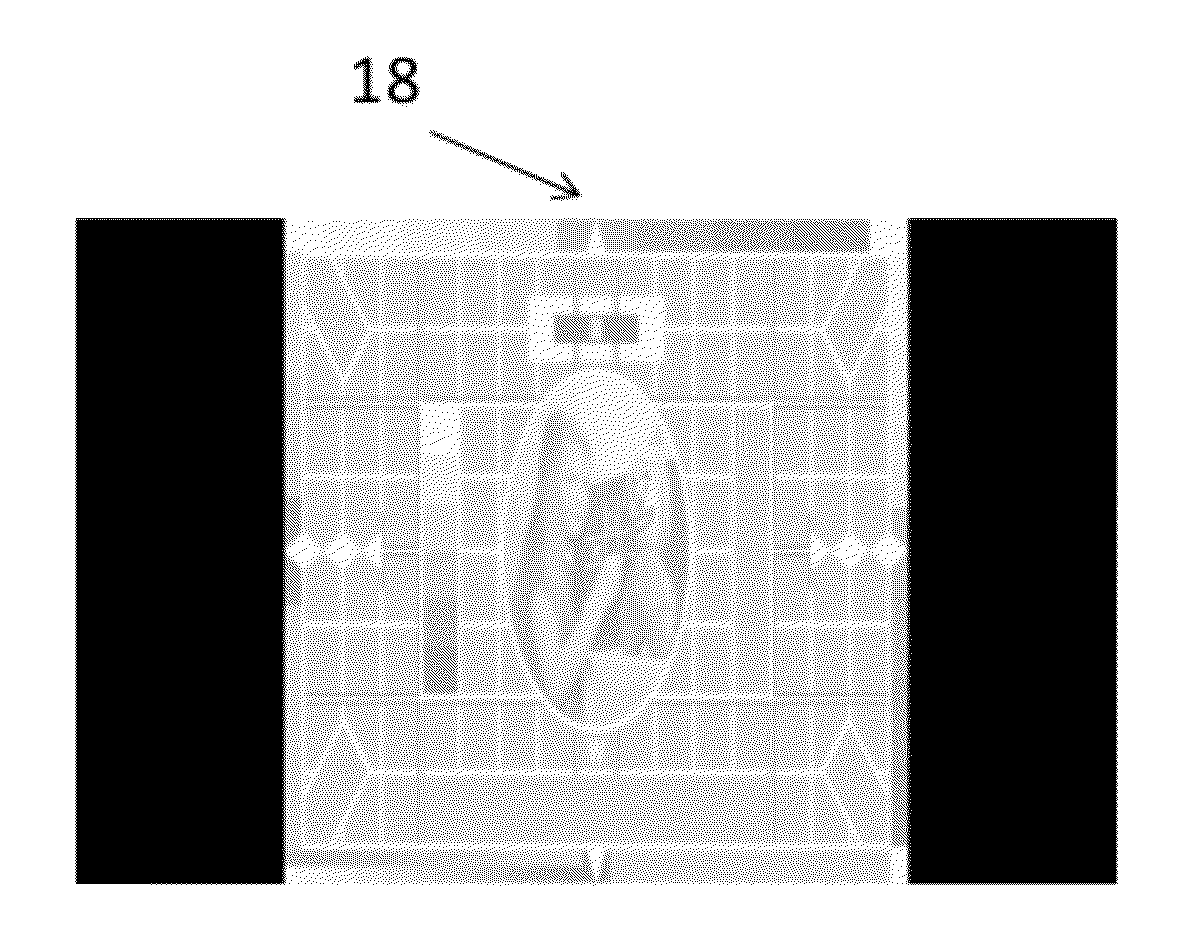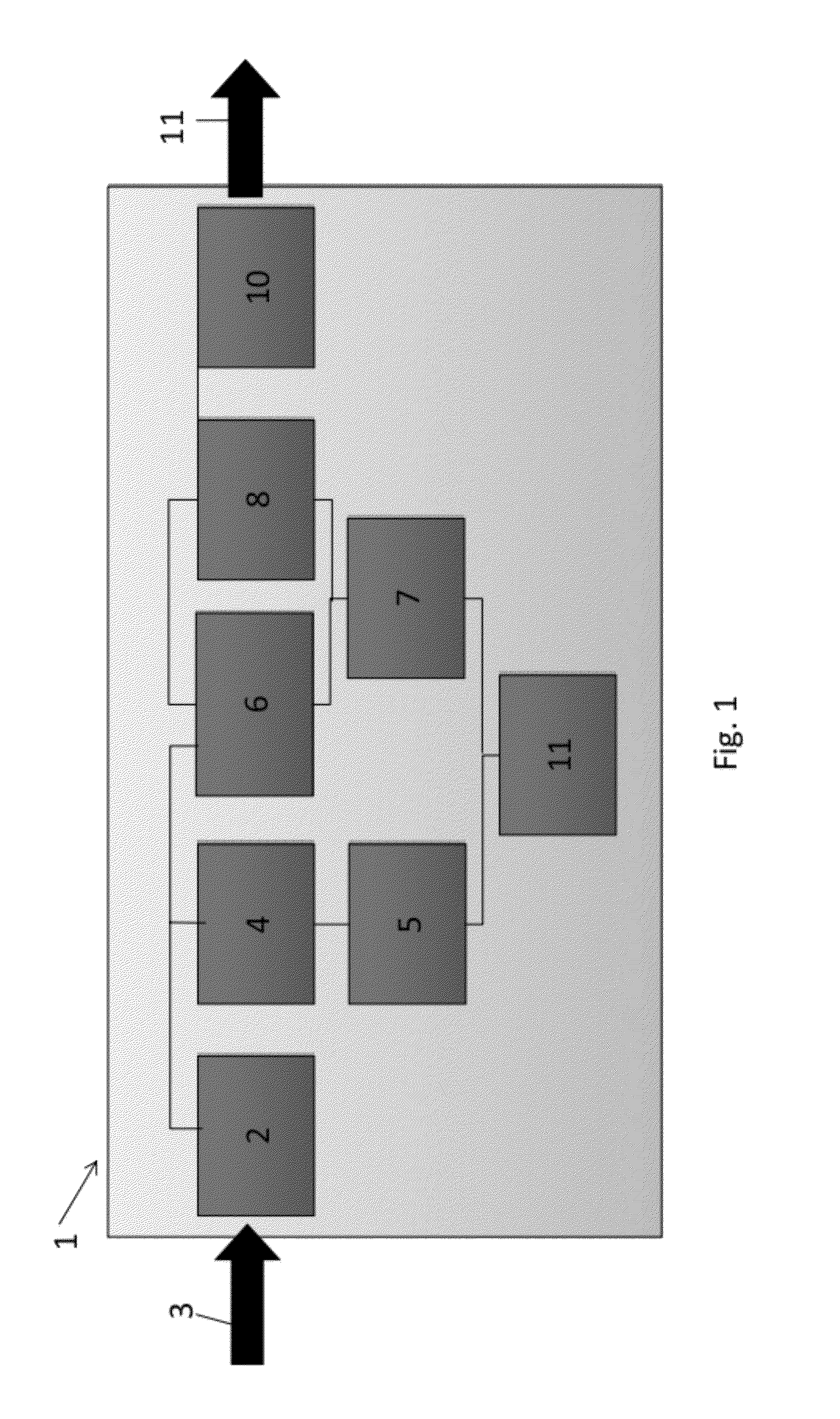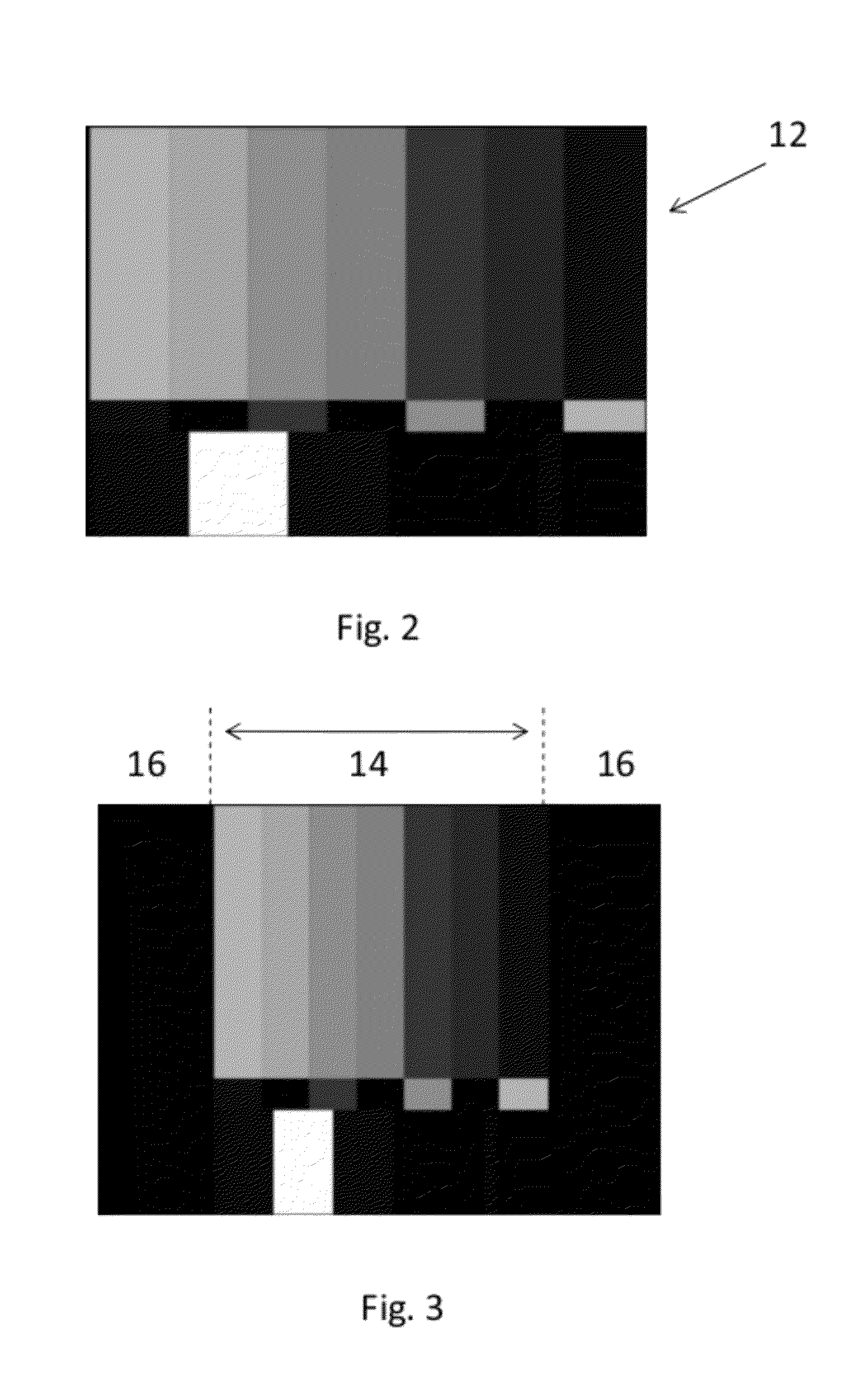Video Signal Processing
a video signal and processing technology, applied in the field of data transmission or streaming, can solve problems such as perceptual significance of compression artefacts, and achieve the effect of reducing the complexity of a given number of pixels
- Summary
- Abstract
- Description
- Claims
- Application Information
AI Technical Summary
Benefits of technology
Problems solved by technology
Method used
Image
Examples
Embodiment Construction
[0032]Further preferred features and aspects of the present invention will be apparent from the following detailed description of an illustrative embodiment, made with reference to the drawings, in which:
[0033]FIG. 1 is a block diagram showing the arrangement of the components in the illustrative embodiment.
[0034]FIG. 2 is a perspective view of an image of a test card from a video signal source as it would appear on a standard 4:3 aspect ratio display format.
[0035]FIG. 3 is perspective view of the image of the test card from FIG. 2 following sampling the video signal so as to reduce the active image area by 40%.
[0036]FIG. 4 is a perspective view of an image of a test card that has been linearly squeezed in the horizontal direction.
[0037]FIG. 5 is a perspective view of an image after the signal from FIG. 3 has been further sampled so as to stretch the active image area by 167% to closely represent the size shown in FIG. 2.
[0038]An arrangement 1 of components for pre-processing a vide...
PUM
 Login to View More
Login to View More Abstract
Description
Claims
Application Information
 Login to View More
Login to View More - R&D
- Intellectual Property
- Life Sciences
- Materials
- Tech Scout
- Unparalleled Data Quality
- Higher Quality Content
- 60% Fewer Hallucinations
Browse by: Latest US Patents, China's latest patents, Technical Efficacy Thesaurus, Application Domain, Technology Topic, Popular Technical Reports.
© 2025 PatSnap. All rights reserved.Legal|Privacy policy|Modern Slavery Act Transparency Statement|Sitemap|About US| Contact US: help@patsnap.com



